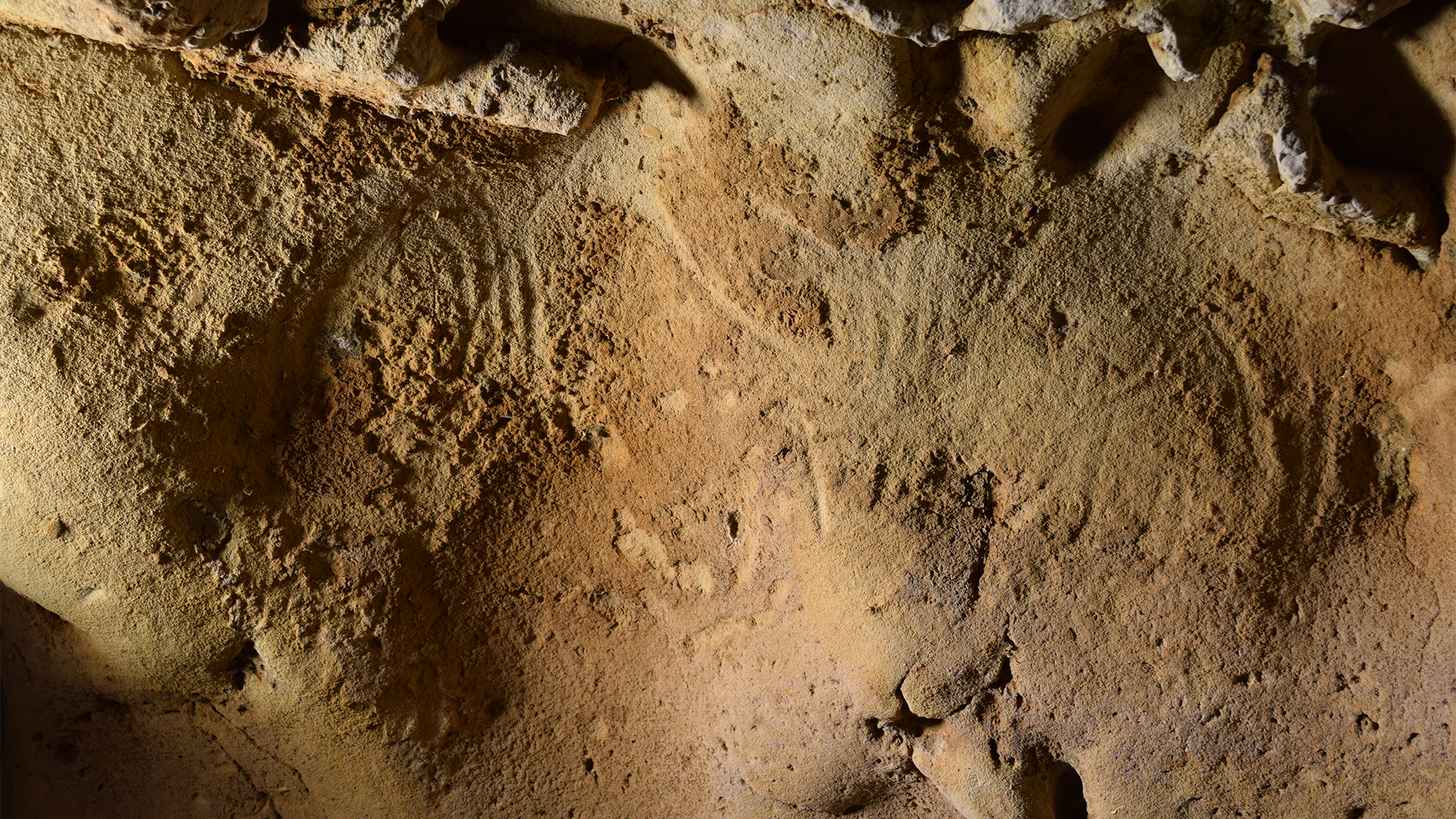

Cave paintings and markings uncovered by anthropologists and archaeologists can be categorized as art—some may even count as early forms of writing. Despite finding drawings in caves across Europe and as far as Indonesia from thousands of years ago, relatively little is still known about the artistic expressions made by both primitive Homo sapiens and extinct Neanderthals.
[Related: How Neanderthal genetic material could influence nose shapes to this day.]
According to a study published June 21 in the open-access journal PLOS ONE, some markings on a cave wall in France date back more than 57,000 years ago, making them the oldest known engravings made by Neanderthals to date.
“Fifteen years after the resumption of excavations at the La Roche-Cotard site, the engravings have been dated to over 57,000 years ago and, thanks to stratigraphy, probably to around 75,000 years ago, making this the oldest decorated cave in France, if not Europe!” the authors wrote in a statement.
Neanderthals are slowly shaking their reputation as our more “primitive” cousins. A 2021 find from a “Unicorn Cave” in Germany found early hints of Neanderthal art dating back 51,000 years. Neanderthals also could have lived in tight family bonds and possibly even cooked crab 90,000 years ago.
Only a few artistic productions like the ones from Germany are attributed to Neanderthals, and their meaning is still subject to debate. The newly-found drawings, spotted in a cave called La Roche-Cotard in central France’s Loire Valley, could give scientists more insight.
The team interprets this series of non-figurative markings on the wall as finger-flutings– or marks made by human hands. They made a plotting analysis and used photogrammetry to build 3D models of the markings and compared them with known and experimental human markings. Based on the arrangement, spacing, and shape of the engravings, the team believes that they are deliberate, intentional, and organized shapes that human hands created.

The sediments within the cave were dated using a process called optically-stimulated luminescence dating. According to the researchers, this particular cave was closed up by sediment about 57,000 years ago—roughly 3,000 years before Homo sapiens became established in Europe.
The age of the sediments, combined with the fact that stone tools in the cave are associated with a Neanderthal-specific technology called Mousterian, is strong evidence that these engravings are the work of Neanderthals, according to the team.
[Related: Sex, not violence, could’ve sealed the fate of the Neanderthals.]
These nonfigurative, and still indecipherable, creations are a similar age with cave engravings that Homo sapiens made in other parts of the world, adding more evidence to the idea that Neanderthals were as complex and diverse as our own human ancestors.
